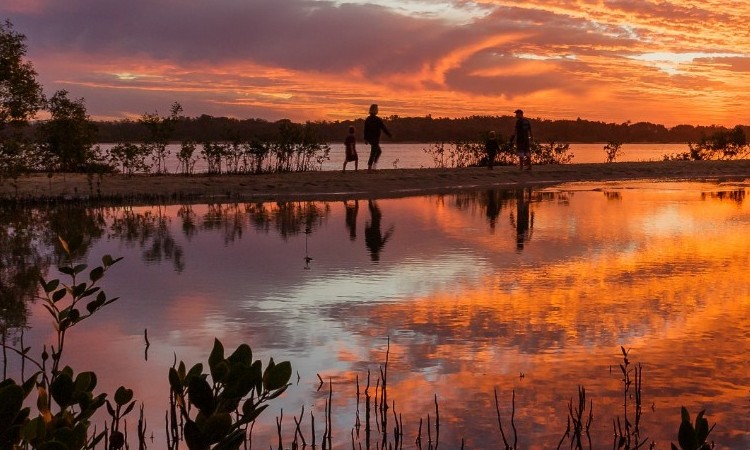

Waterways and wetlands
Waterways and wetlands are our rivers, canals, lakes and water bodies.
In this section
The Sunshine Coast features many natural waterways and wetlands, as well as man-made channels, canals and lakes.
Our region has catchments of five major waterways: the Maroochy and Mooloolah Rivers, the upper Mary and Stanley Rivers and the Pumicestone Passage. They support a wide range of habitats, including:
- Estuaries and freshwater pools and riffles, and
- Wallum, paperbark and sedge wetlands.
Waterways and wetlands provide homes for our aquatic animals, for example, fish, crustaceans, shellfish, water birds, frogs, turtles and aquatic mammals. Our habitats provide for 8 plants and 21 animals that are rare and threatened aquatic species.
They also support streamside - riparian areas. Riparian areas are important as they filter pollutants. Their vegetation also helps to reduce erosion and give shade for water-based habitats.
Waterways and wetlands are great for swimming, boating and fishing. Residents and visitors can also enjoy walking or cycling on foreshores.
You may also be interested in
Biodiversity
Biodiversity is the variety of all life plants, animals, fungi and microorganisms.
Flooding and stormwater
Flooding occurs when water flows over land that is normally dry. Stormwater is runoff from rainfall.
Adaptation and resilience
Adaptation and resilience is our community’s ability to respond and adapt to a changing climate.